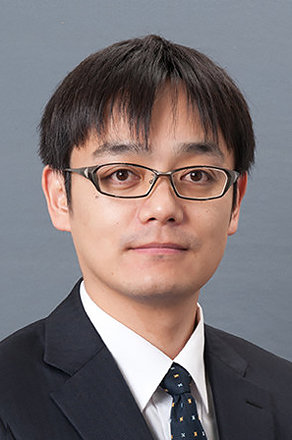
Development of new solid catalyst process
Challenge the issues on energy & resources!
Laboratory on Catalyst/Resource Chemical Process
Associate Professor:NISHIMURA Shun
E-mail:
[Research areas]
Catalyst chemistry, Solid catalyst, Alloy catalyst, Biomass transformation
[Keywords]
New energy sources, Metal nanoparticle, Solid acid/base catalyst, Catalyst design, Mechanistic study
Skills and background we are looking for in prospective students
Basic calculation skill, Careful data processing capacity, and Safety consciousness are necessary for participation. Some experiences on Physical chemistry, Organic chemistry, Inorganic chemistry, Analytic chemistry and/or Catalyst chemistry would be a great help for your studying. We welcome your aggressive curiosity and inquiring minds.
What you can expect to learn in this laboratory
Development of new solid catalyst process is constructed with a variety steps: Catalyst design → Catalyst preparation & Conditioning → Performance evaluation & Conditioning → Characterizations (Kinetics, XRD, TEM-EDS, N2 ads/des, FT-IR, UV-vis, Raman, XPS, XAFS etc) → Modeling/Hypothesis → Verification → Scope. Moreover, there is more than one crucial factor on the target catalysis. Accordingly, following the step to reveal the role of catalyst, the student would learn the various analytical methods and skills to combine the many aspects of data.
【Job category of graduates】
Chemical and material suppliers in the area of car, plastic, polymers and surfactant manufactures.
Research outline
Catalyst technology has been a key role on manufacturing in our life. Thus, development of highly-functional catalytic process would lead drastic impacts on our society towards more green and sustainable styles. For instance, the development of catalytic ammonia (NH3) generation from nitrogen (N2) in air process had opened a lot of new avenues to supply N-incorporating compounds. In particular, after this achievement, chemical fertilizer and dynamite manufacturings were contributed to the growth of population and facilitation of industrial technology [Noble Prize for Chemistry in 1918].
The targets of our laboratory are i) new catalyst design on the basis of conventional transformation skills on fossil resources, and ii) construction of biomass-based utilization process over solid catalyst, in order to fabricate a low carbon society.
[Metal-supported catalyst: New design and Mechanistic studies]
The catalytic performance of metal-supported catalyst; i.e. active metal centers supported on inorganic/organic solid surface, was attributed to i) electronic state and shape of the active metal center, ii) environment around the active metal center, and iii) properties of support. Studying on the relationships among these factors by using fine/uniform as-prepared metal-supported catalysts reveals the crucial factors for the target reaction. In previous our reports, we found the highly-reactive alloy-supported catalysts [ex. CS&T 2013, ACS Catal 2013, CheSusChem 2015, ACS sustainable Chem Eng 2019, Appl. Catal. B: Environ. 2021], the organic-linkage assisted metal-supported catalysis [ex. JPCC 2014, Asian JOC 2017, J. Catal. 2023] and the specific support designs for high reactivity or stability [ex. J. Mater. Chem. A 2014, Catal Lett 2021].
[Development of solid catalyst assisted biomass transformations]
On the basis of the carbon neutral concept, the biomass utilization is a one of important approaches to fabricate sustainable society. However, low life-cycle assessment (LCA) is an issue for this transformation. To accelerate the green technology, development of highly-efficient catalytic transformation process has been investigating. In previous our reports, we proposed the bio-fuel production process with an atmospheric hydrogen gas [Catal. Today 2014], the production of highly value-added chemicals from inedible biomass resource [ex. ChemSusChem 2013, ACS Omega 2018, Catal Commun 2019, Catalysts 2019], and the highly-active acid-base catalyzed processes [ex. BCSJ 2012, ChemSusChem 2014, CS&T 2016]. Moreover, instead of conventional batch-type of reactor system, application of flow-type of reactor system and itsdemand on the solid catalyst have been examined [ACS Omega 2018, Catalysts 2019, CS&T 2022, Catal. Lett.2024, Chem. Lett. 2025].
Key publications
- S. D. Le, S. Nishimura: Selective hydrogenation of succinic acid to gamma-butyrolactone with PVP-capped CuPd catalysts. Catal. Sci. Technol. 12 (2022) 1060.
- K. Anjali, S. Nishimura: Efficient Conversion of Furfural to Succinic Acid using Cobalt-Porphyrin based Catalysts and Molecular Oxygen. J. Catal. 428 (2023) 115182
- X. Li, S. Nishimura: Synthesis of 5-Hydroxymethy-2-furfurylamine via Reductive Amination of 5-Hydroxymethyl-2-furaldehyde with Supported Ni-Co Bimetallic catalysts. Catal. Lett. 154 (2024) 237.
Equipment
Evaluation of catalyst performance: GC, HPLC, GC-TOFMS, FTICR-MS, NMR for liquid, etc
Characterization of catalyst: XRD, Gas Adsorption/desorption, SEM/TEM, XPS, NMR for solid, FT-IR, TPR/TPD, pulse method, etc
For a specific elucidation methods: Out-side institutes(ex. KEK-PF, SPring-8) for in-situ/ex-situ XAFS analysis.
Teaching policy
Labo meeting for introduction of previous papers and/or discussion of recent data is held in one time per two weeks. Core-time is not determined, however, the students have to pay attentions to their healthy/regular life in the labo. Presentations in domestic/international conference are recommended.
We hope more than one paper/proceeding reports would be published according to your achievement for all members.
[Website] URL:https://www.jaist.ac.jp/~s_nishim/index.html